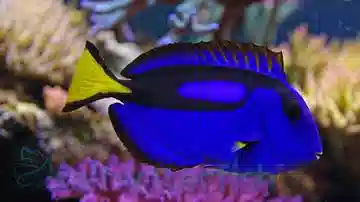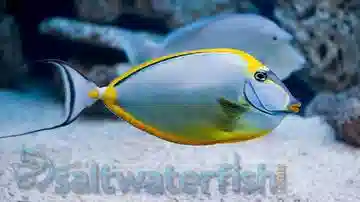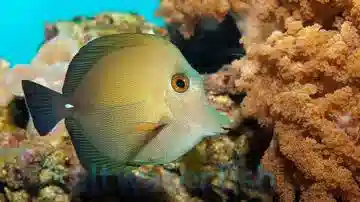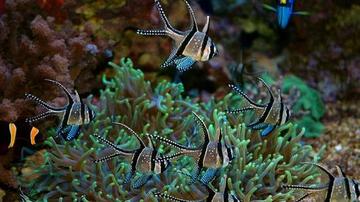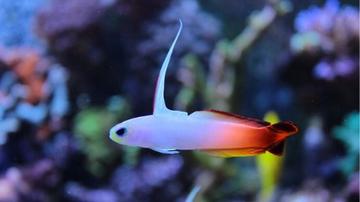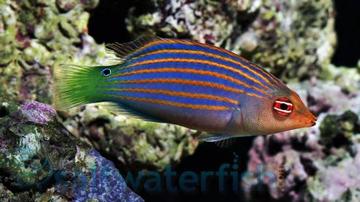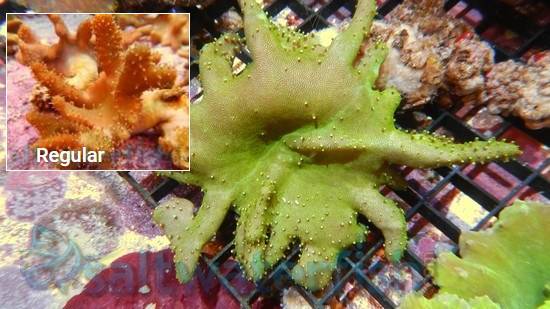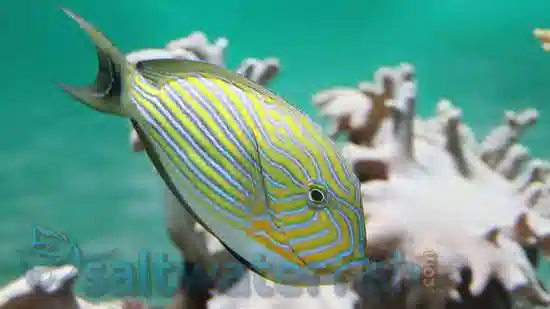Clown Tang - South Asia
Acanthurus lineatus
(0 Reviews)
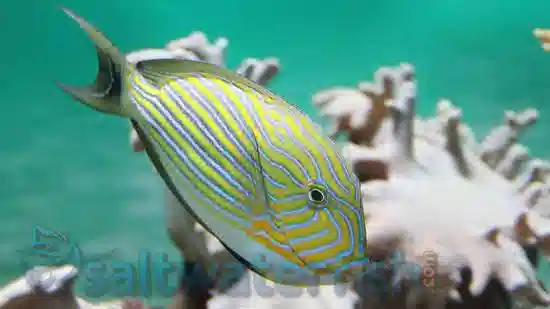
Clown Tang - South Asia
Acanthurus lineatus
(0 Reviews)
{{ item.name }}
Size: {{ item.extra_field_3 }}
${{ getFormattedPrice(item.saleprice) }} ${{ getFormattedPrice(item.price) }}
To join the waiting list, click here
Free Shipping
With
$199.00
or more in Marine Life.
More details...
Clown Tang - South Asia Care Facts
There are no key facts available for this product.
The Clown Tang is an active beautiful species. With its striking color form consisting of varied shades, it makes a captivating addition to any tank. The Clown Tang is known to be a territorial species, and as it grows it shows its aggressive behavior and suggested to be kept singly in the tank. It should be housed in a tank with plenty of open swimming space as well as a large amount of live rock for algae grazing, shelter and territory. The Clown Tang requires moderate water movement with excellent water quality. Because of their sharp spines, it's not recommended to net this Clown Tang species as it can become stuck and may become injured or stressed, instead a container should be used to carry this fish. It is herbivores and mainly eats marine algae and vegetable matter within its natural habitat. Although, the Clown Tang also grazes on any filamentous algae within the aquarium, it should be fed at least twice a day for its continued good health.
Clown Tang (Acanthurus lineatus): Caring For the Clown Tang In Your Aquarium
The Clown Tang, scientifically known as Acanthurus lineatus, is a fascinating and visually striking marine species that can make an intriguing addition to your saltwater marine aquarium. This comprehensive guide will provide essential information on caring for this distinctive fish, covering its habitat, compatibility, diet, care requirements, and more.
Habitat of the Clown Tang
Clown Tangs are native to the warm waters of the Indo-Pacific region, specifically in areas around coral reefs and rocky coastlines. They prefer to inhabit the surge zones and outer reef slopes at depths ranging from 6 to 60 feet (2 to 18 meters).
Reef Compatibility of the Clown Tang
This species is generally considered reef-safe. Clown Tangs are primarily herbivores, feeding on algae in their natural habitat. They can graze on the beneficial microalgae growing on live rock and coral surfaces in captivity. However, they may also nip at the polyps of certain corals and potentially damage them.
Size and Lifespan of the Clown Tang
Clown Tangs can grow to a height of approximately 14 to 17 inches (35 to 43 cm) when fully mature. They can live 5 to 7 years in captivity with proper care, providing several years of enjoyment for dedicated aquarists.
Diet in Captivity of the Clown Tang
In their natural habitat, Clown Tangs primarily feed on various types of algae. In captivity, it's crucial to replicate their natural diet. Provide them with high-quality marine algae sheets, seaweed, and a mix of marine pellets and frozen foods such as brine shrimp and mysis shrimp.
Aquaculture and Availability of the Clown Tang
Clown Tangs are unavailable through aquaculture, but Saltwaterfish.com is committed to providing hobbyists with responsibly sourced fish. This ensures that each Clown Tang is healthy, acclimated, and ready to thrive in your aquarium.
Compatibility with Other Fish and Invertebrates of the Clown Tang
Clown Tangs can be aggressive and territorial, particularly when kept in smaller tanks. It is essential to house them with compatible tankmates that can withstand their potentially aggressive behavior.
Sexual Dimorphism of the Clown Tang
Sexual dimorphism in Clown Tangs is minimal, making it challenging to distinguish males from females based on visual characteristics alone.
Juvenile to Adult Coloration Changes of the Clown Tang
Juvenile Clown Tangs exhibit striking coloration with distinct vertical stripes on a bright yellow body. As they mature into adults, their lines may fade, and they develop a more subdued appearance, often with a brownish-yellow body.
Temperament of the Clown Tang
Clown Tangs are known for their often aggressive and territorial character. They can be dominant in an aquarium and may exhibit aggression towards other tangs or similarly shaped fish.
Tank Requirements of the Clown Tang
To provide the best care for your Clown Tang, maintain a tank with a minimum size of 125 gallons (473 liters). Larger tanks are often recommended, as this species requires ample swimming space to reduce territorial conflicts. Water conditions should mimic their natural habitat, with a pH level between 8.1 and 8.4, a salinity level of 1.020-1.025, a stable temperature between 74-78°F (23-26°C), and moderate water flow to simulate ocean currents.
Common Names of the Clown Tang
The Clown Tang is also known by various names, including Blue-lined Surgeonfish and Lined Surgeonfish.
Compatible Tank Mates of the Clown Tang
Here are five specific species that can make suitable tank mates for your Clown Tang:
- Emperor Angelfish (Pomacanthus imperator)
- Sailfin Tang (Zebrasoma veliferum)
- Triggerfish (Balistidae family)
- Pufferfish (Tetraodontidae family)
- Wrasse (Labridae family)
Why Choose the Clown Tang from Saltwaterfish.com
When you acquire a Clown Tang from Saltwaterfish.com, you invest in a visually striking addition to your saltwater marine aquarium. Saltwaterfish.com is committed to responsibly sourced fish, ensuring that each Clown Tang is healthy, acclimated, and ready to thrive in your aquarium. With their dedication to quality and a wealth of resources, Saltwaterfish.com makes it easy to enjoy the unique beauty of these tangs in your home aquarium.
The Clown Tang (Acanthurus lineatus) is captivating and visually striking in saltwater marine aquariums. With their vibrant coloration and distinctive markings, they can be a beautiful choice for experienced aquarists looking to add a touch of dynamism to their collection. However, due to their potentially aggressive nature, it is essential to be mindful of their care requirements and compatibility when considering this unique fish for your aquarium.
Currently Clown Tang - South Asia does not have any reviews.



